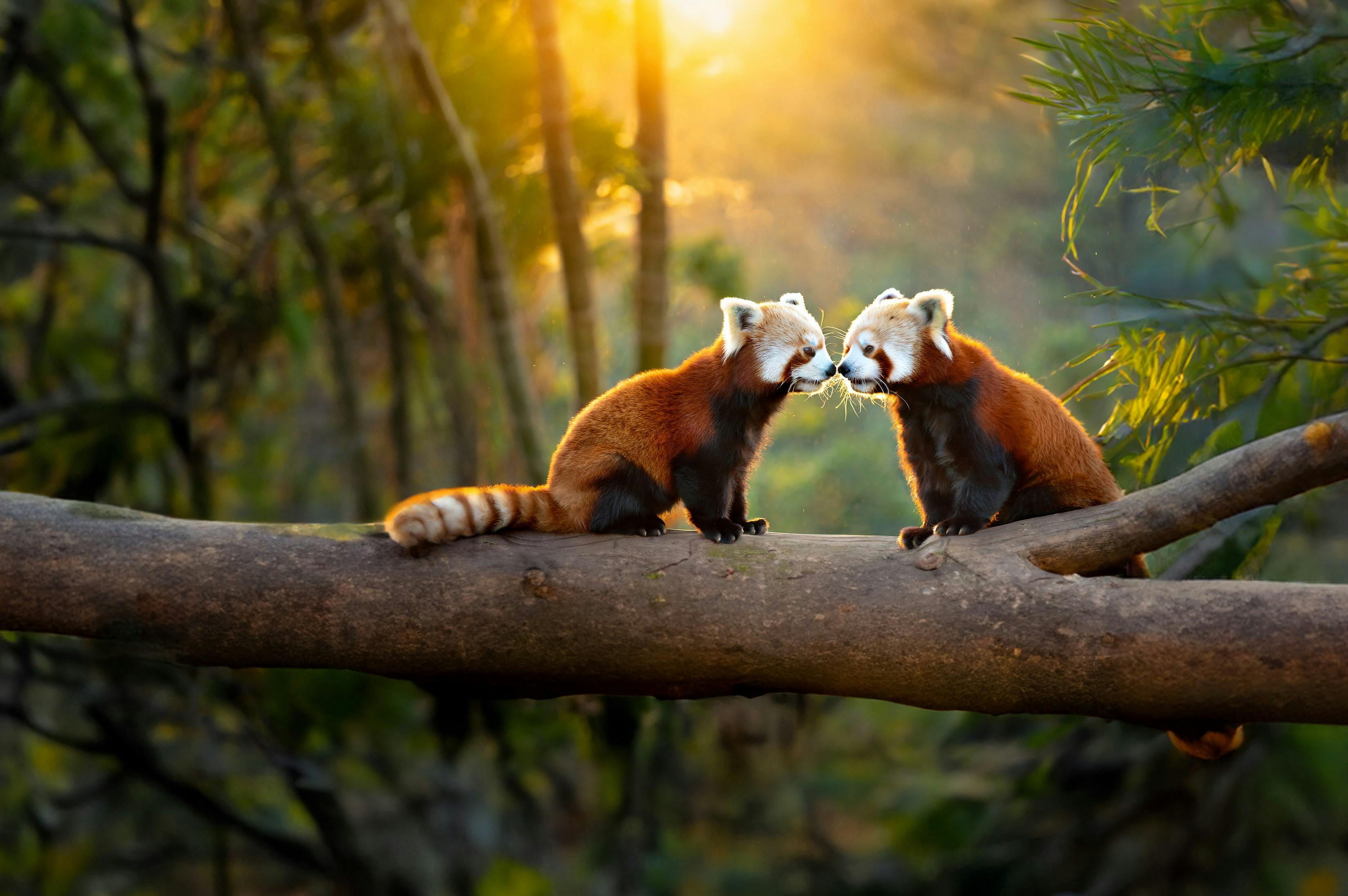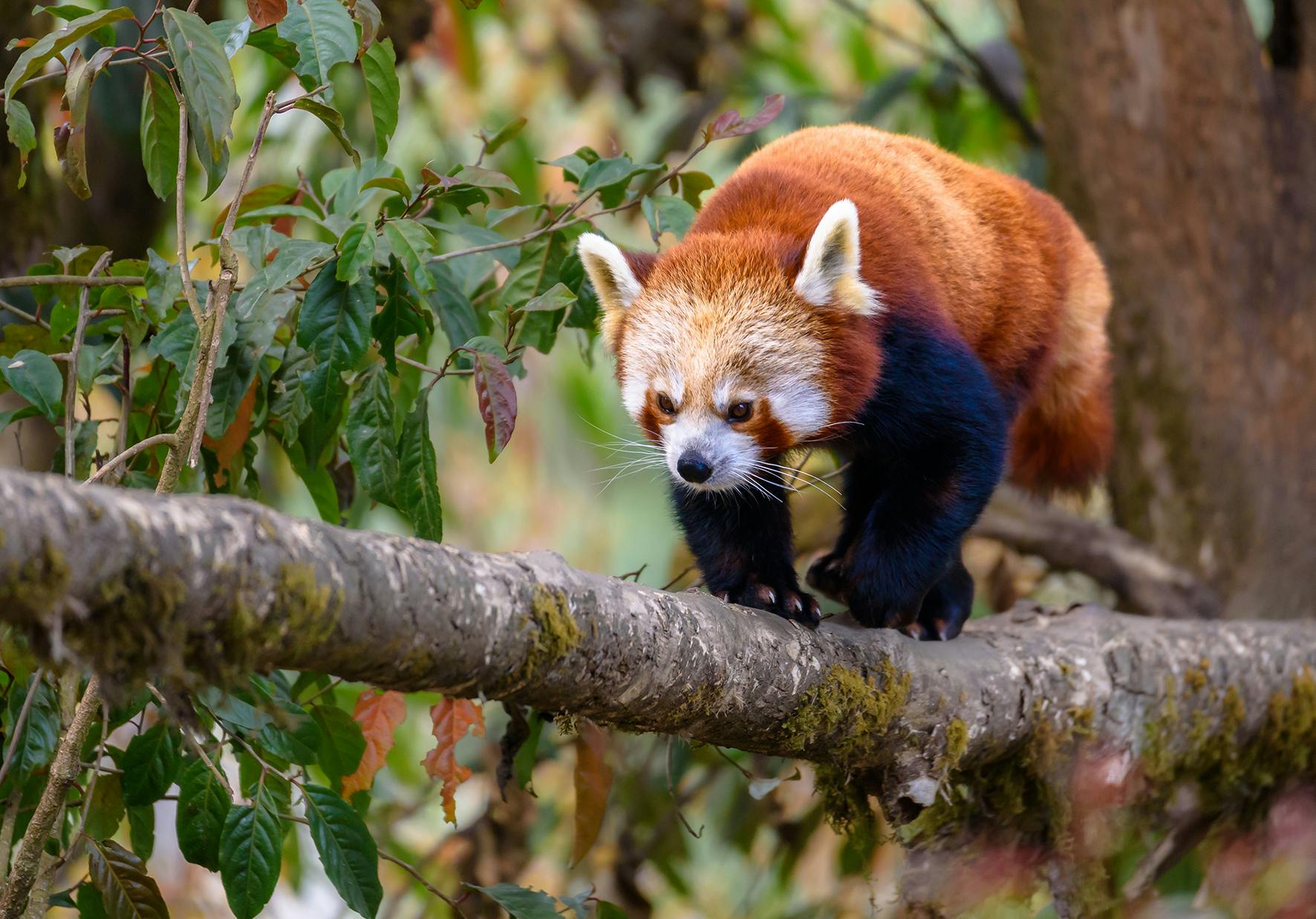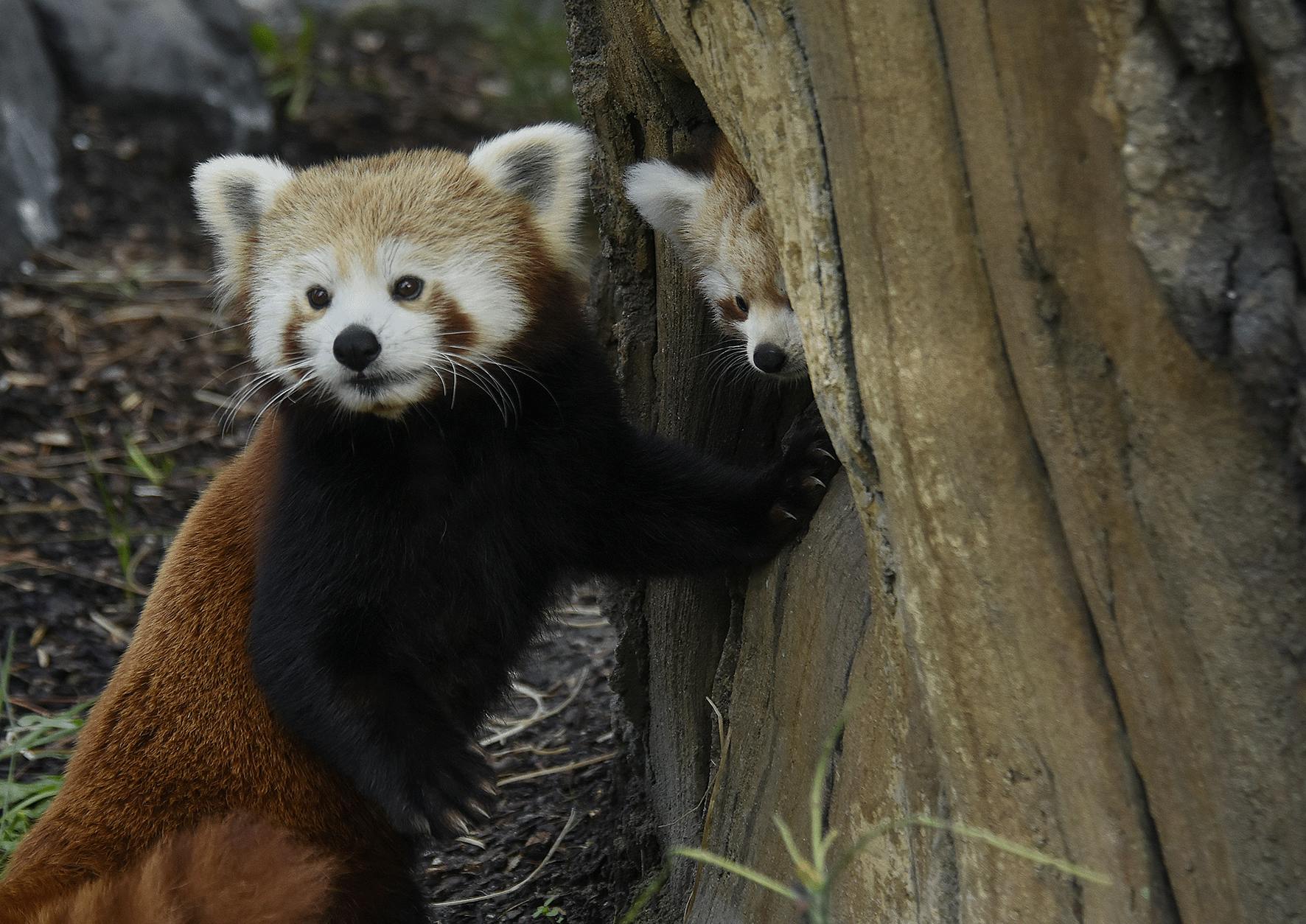Red Panda




The red panda is a small tree-dweller. With its characteristic red fur and black belly, it's almost invisible in the trees where it lives. Although the name suggests it, the red panda is not directly related to the giant panda. Even though they both fall under carnivores, they do not have a recent common ancestor. The similarity lies mainly in their diet; both species primarily eat bamboo.

14 years
25 centimeters
50 - 64 centimeters
3 - 5 kilograms

The red panda is perfectly adapted to life in bamboo forests. They have specialized footpads with a rough underside to grip onto trees. Additionally, they possess a sixth finger, an extension of their wrist that aids in grasping bamboo stems. Furthermore, their tongues have special ridges to prevent leaves from slipping out of their mouths before they can munch on them from the branches.

Diergaarde Blijdorp coordinates the global population management program for the red panda. Based on the lineage of pandas currently residing in zoos, new pairs are formed to produce young pandas. These offspring are then transferred to other zoos, becoming the next generation in the lineage. Red pandas are relatively easy to pair: they mate in the spring, and the young ones are ready to move to their new homes the following autumn, where they can form new pairs with other pandas. Although pandas typically lead solitary lives in the wild, in zoos, there can be family groups of males or females cohabiting.
The red panda is found in the Himalayan region, which includes China, Myanmar, Tibet, India, Bhutan, and Nepal. It inhabits mountain forests with an ample supply of bamboo for food, typically up to an altitude of about 5 kilometers. Unfortunately, due to extensive deforestation for agriculture and urban development, the panda's habitat is gradually shrinking.
...The red panda is slightly larger than a raccoon and is also called a cat bear?
...The red panda can sleep up to 17 hours a day?

Diergaarde Blijdorp collaborates with Red Panda Network, which purchases and transforms land into natural habitats in Nepal and India. They involve the local communities in efforts to protect their native environment. Additionally, Blijdorp conducts research on the red panda. An excellent example is the testing of GPS collars to gain a better understanding of the behavior and distribution of red pandas in the wild. These collars were initially tested on pandas here to determine their effectiveness for research. Subsequently, the collars were transported to Nepal for research on wild red pandas. This way, Diergaarde Blijdorp assists pandas both domestically and internationally.
At Blijdorp Zoo, you'll find the red pandas in the Himalayan area, where there are two enclosures. They have plenty of trees to climb, hide, and sleep in. Besides bamboo, the pandas are also given grapes for an extra vitamin boost.